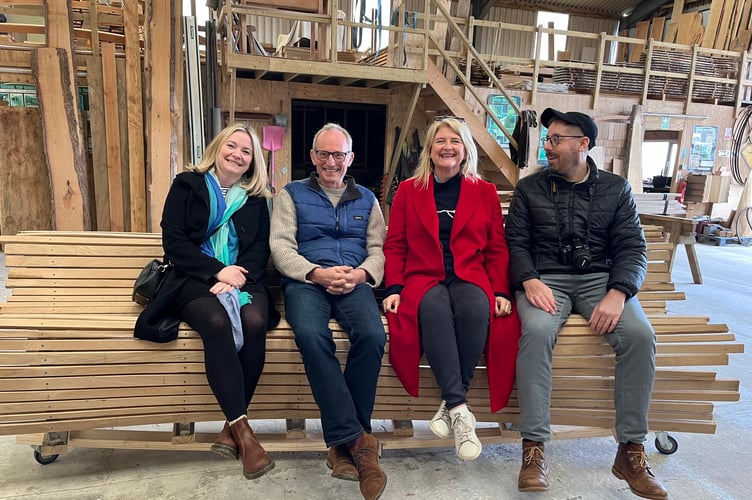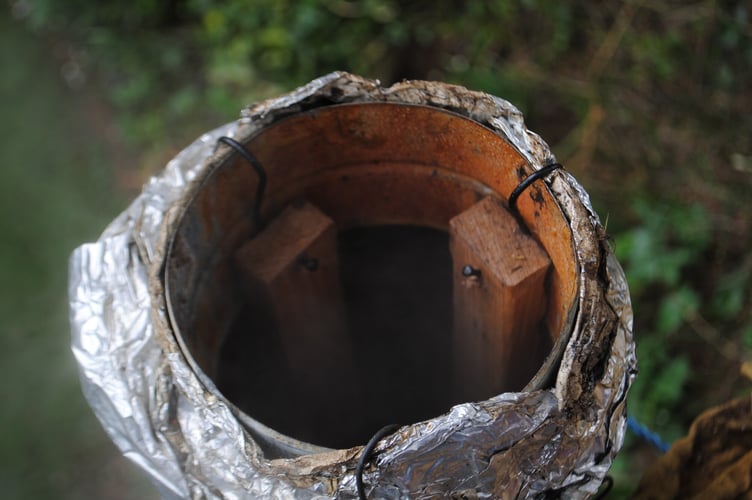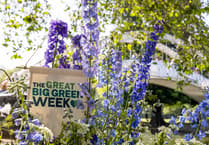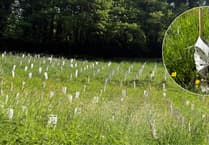An Okehampton-based craftsman is showcasing a bench he’s created at the Chelsea Flower Show today and tomorrow (Friday and Saturday, May 23 and 24).
Mark Tungate has worked alongside the award-winning designer Tom Hoblyn to create Hospice UK’s Garden of Compassion which will celebrate the important role played by hospice gardens in end of life care across the UK.
Tom Hoblyn said: “The main feature of our garden is the wonderful, sinuous bench, which we’re calling the Together Bench. It’s going to weave right through the garden – each room will have a section – and it’ll tie the whole scheme together.”
Mark is in charge of making the benches in his small workshop near Okehampton.
Each bench takes him around one month to create and are crafted from a fallen oak, which has been given new life to offer patients, their families and hospice staff a place in which to sit in the Garden of Compassion.
Mark said: “I made the prototype before Christmas so I haven’t been doing much else since then!”
He has made five benches for the Garden of Compassion.
Tom said: “One thing that Mark and I discussed right from the beginning and we’ve managed to do it at every step of the garden, is to use reclaimed materials – so our boulders are coming from a field clearance in Durham – right through to this oak here, which is from a wind-felled tree.
“It’s quite poignant, because it was at the end of its lifecycle, and then we’ve taken it and given it new life by making it into a bench – so you have this whole circle of life thing going on, echoing what happens at a hospice.

The garden is fully funded by Project Giving Back which allows charitable organisations in the UK to exhibit a show garden at the RHS Chelsea Flower Show.
Tom continued: “I really wanted to have this recurring sustainability message going right through the garden. We’re using reclaimed paving, the gravel is a by-product of the road industry from the quarry, so everything is reclaimed and has a new lease of life in the hospice garden.”
The reclaimed oak, after being planed in a larger workshop several miles away, is first steamed in a traditional method which involves the thin strips of oak being placed into the steamer for around an hour, before being taken out and laid across the supporting brackets of the bench.

In between each strip, small ‘biscuits’ are knocked in as spacers, before small copper rivets are hammered in to firmly secure the wood to the frame.
The copper rivets are a ‘nod to the boat building industry of the north east of England’ – and whilst they start life as nice and shiny, over time they will turn a Verdigris patina that will bleed beautifully into the wood.
Tom said: “I feel like we have this fear of technology – we’ve overwhelmed by it,”
“So I’ve gone back to very traditional arts and crafts techniques, and I want to celebrate British craftsmanship at the show. I’ve sought out the very best craftspeople in the country that I can, like Mark, like my drystone waller and clay renderer, all these people – I’ve found the very best people.”
-Mark-(R).jpeg?width=752&height=500&crop=752:500)




Comments
This article has no comments yet. Be the first to leave a comment.